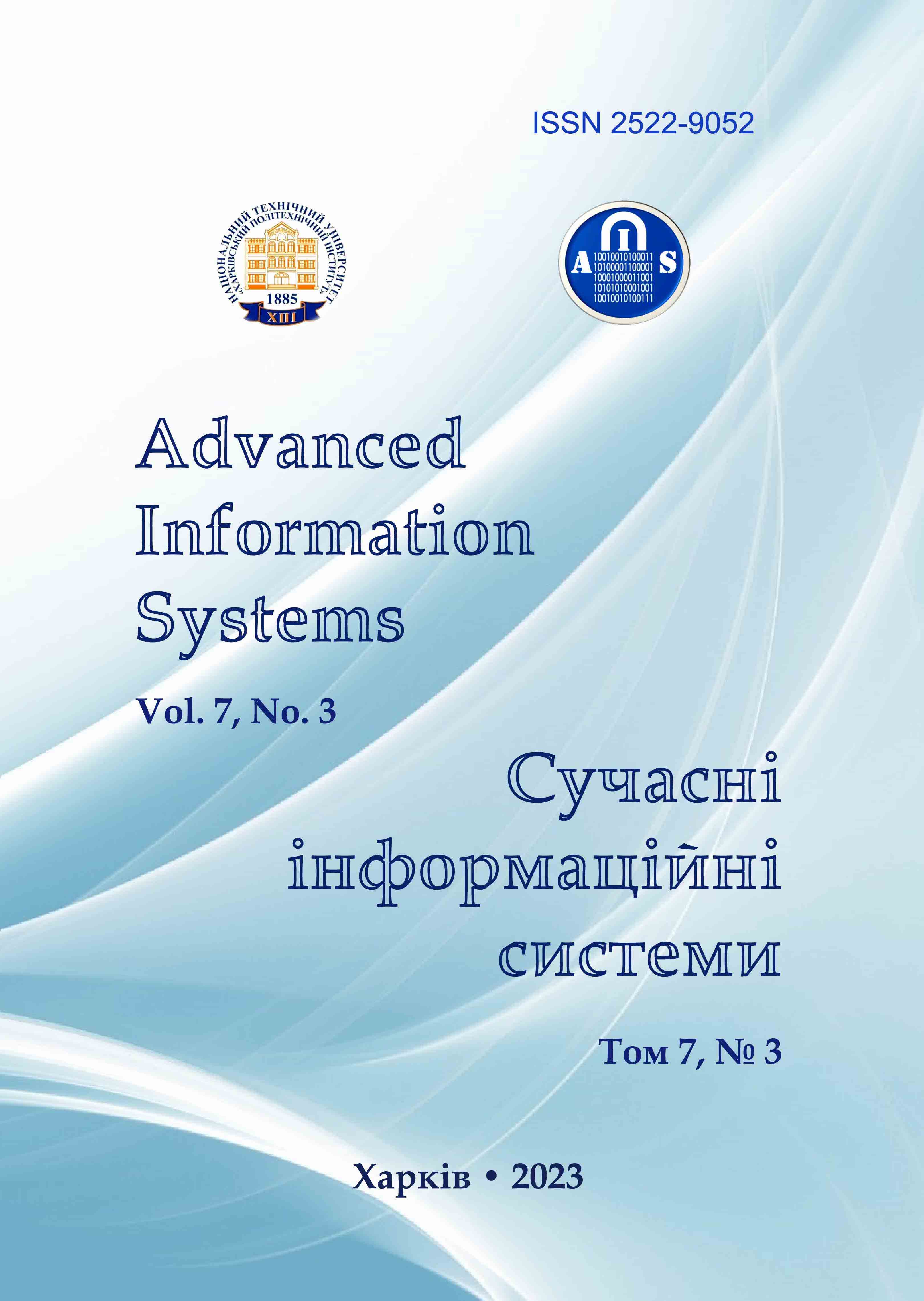EXCEL-oriented procedures for determining the entropy of a distribution function and its relative parametric sensitivity (elasticity) under the conditions of two-sided restrictions on the range of values of a continuous random variable
Main Article Content
Abstract
The goal of the work. Development of an EXCEL-oriented calculator for calculating entropy and its elasticity for distribution functions under the condition of a limited domain of definition of a continuous random variable. Subject of study. Probability density functions and their entropy under the condition of bilateral restrictions on the domain of possible values of random variables. Research methods. Algorithmic and numerical analysis of procedures for obtaining numerical values of entropy of density functions of continuous random variables under the condition of two-way restrictions on the area of its definition. The obtained results. The work proposes an EXCEL-oriented calculator for calculating entropy and its elasticity for distribution functions under the condition of a limited area of definition of a continuous random variable. All distribution functions used in the work are divided into three categories depending on the form in which entropy and its elasticity are presented. The first category includes distribution functions for which entropy and its elasticity can be determined analytically, namely: Simpson distribution, Right-angled and negatively skew version distribution, Right-angled and positively skew version distribution, Sine Wave Distribution, Ark – Sine Distribution Type I, Ark – Sine Distribution Type IІ, Ordinary Cosine Distribution, Raised Cosine Distribution, U-shaped parabolic distribution Type I, Semi-elliptical distribution, Ark – Sine Distribution Type II. Another category includes distribution functions for which entropy can be defined in the analytical group, its elasticity can be defined in the tabular part, namely: Truncated Normal Distribution, Kumaraswamy Distribution, Beta Distribution, Generalized Beta Distribution, Uniformly increasing distribution density, Ark-Sine Distribution Type III. The third category includes distribution functions for which entropy and its elasticity can be determined in tabular form. Basic information about the structure of the proposed calculator and examples of its application are provided. The method of determining the confidence interval of the point estimate of entropy is described. An example of using the calculator proposed in this message for planning an experiment related to entropy data analysis is given.
Article Details
References
Martin, N. and England, J. (1981), Mathematical Theory of Entropy, Addison – Wesley Publishing Cjmpany, London, 350 p., available at: https://www.osti.gov/biblio/5157083.
Johnson, N. L., Kotz, S. and Balakrishnan, N. (1994), Continuous Univariate Distributions, Vol. 1, JohnWiley&sons, inc, New York, 706 p., doi: http://dx.doi.org/10.1080/00401706.1995.10484392.
Gadetska, S.V. and Dubnitskiy, V. Yu. (2018), “Vyznachennja dyferencialjnoji entropiji vypadkovoji velychyny, jaka zadana urizanym pokaznykovym rozpodilom [Deifinion of the differential entropy of a random value given by a trun-cated distribution]”, Control, Navigation and Communication Systems, Vol. 5, Issue 51, pp. 69–73, doi: http://dx.doi.org/10.26906/SUNZ.2018.5.069.
Michlowicz, J. V., Nichols, J. M. and Bucholtz, F. (2014), Handbook of differential entropy, A. CHAPMAN & HALL, New York, 220 p., doi: https://doi.org/10.1201/b15991.
Dubnytskyi V. Y. and Skorikova І. H. (2015), “The determination of distribution parameters of one-dimensional con-tinuous random variable according to its initial characteristics by financial risks modelling”, Financial and Credit Ac-tivity Problems of Theory and Practice, No1(18), pp. 212-225, doi: http://dx.doi.org/10.18371/FCAPTP.V1I18.46129.
Gadetska, S., Dubnitskiy, V. and Kobulin, A. (2018), “Parametrychna elastychnist entropii Shennona, Tsallisa ta Reni [Parametric elasticity of entropy of Shannon, Tsallis and Renyi]”, Control, Navigation and Communication Systems, Issue 3(49), pp. 61-66, doi: http://dx.doi.org/10.26906/SUNZ.2018.3.061.
(1972), Handbook of Mathematical Functions With Formulas, Graphs, and Mathematical Tables, Edited by Milton Abramowitz and Irene A. Stegun, National Burea of Standards, USA, Washington, 1046 p., available at: https://personal.math.ubc.ca/~cbm/aands/abramowitz_and_stegun.pdf.
Zamkov, O. O., Tolstopyatenko, A. V. and Cheremykh, Yu. N. (2001), “Matematicheskiye metody v ekonomike” [Math-ematical methods in economics], Delo i Servis, 368 p., available at: https://www.at.alleng.org/d/econ/econ186.htm.
Lewin, L. (1981), Polylogarithms and associated functions] NORTH HOLLAND, New York • Oxford, 359 p., avail-able at: https://www.worldcat.org/title/polylogarithms-and-associated-functions/oclc/6666619.
Kumaraswamy, P. (1980), “A generalized probability density function for double-bounded random processes”, Jour-nal of Hydrology, Vol. 46 (1-2), pp. 79-88, doi: http://dx.doi.org/10.1016/0022-694(80)90036-0.
Horst, Rinne (2010), Location-Scale Distributions, Linear Estimation and Probability, PlottingUsing MATLAB, Department of Economics and Management Science, Justus-Liebig-University, Giessen, 260 p., available at: http://geb.uni-giessen.de/geb/volltexte/2010/7607/pdf/RinneHorst_LocationScale_2010.pdf.
Vadzinsky, R. N. (2001), “Spravochnik po verojatnostnym raspredelenijam” [Handbook of Probability Distribu-tions], NAUKA, Moscow, 295 p.
Hemelrijk, J. (1977), Orienterende Cursus Mathematische Statistiek, Mathematisch Centrum, Amsterdam, 247 p., available at: https://core.ac.uk/download/pdf/301666803.pdf.
Kundrat, A. M. and Kundrat, M. M. (2014), “Naukovo – tekhnichni obchyslennia zasobamy MathCAD ta MS EXCEL [Scientifically-technical calculations by means of Mathcsad and MC EXCEL]”, NUVHP, Rivno, 2014. 252 p. availa-ble at: https://ep3.nuwm.edu.ua/1760/1/734733%20zah.pdf.
Gadetska, S., Dubnitskiy, V., Khodyrev, A. and Kushneruk, Yu. (2023), “Excel-oriientovanyi kalkuliator dlia ob-chyslennia rezultativ entropiinoho analizu danykh, shcho rozpodileni po katehoriiakh [Excel-oriented calculator for calculating results of entropy analysis of data distributed by categories]”, Advanced Information Systems, Vol. 7, No. 2, pp. 28–40, doi: https://doi.org/10.20998/2522-9052.2023.2.05.
